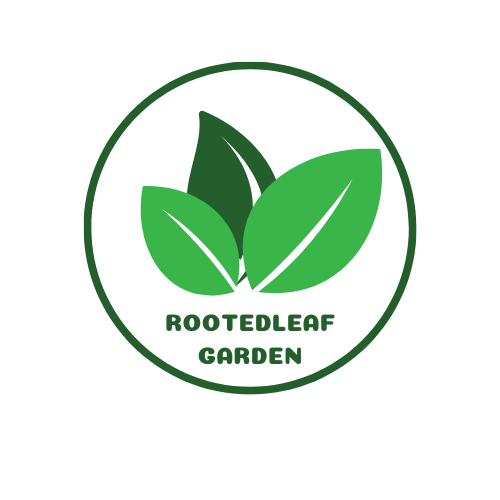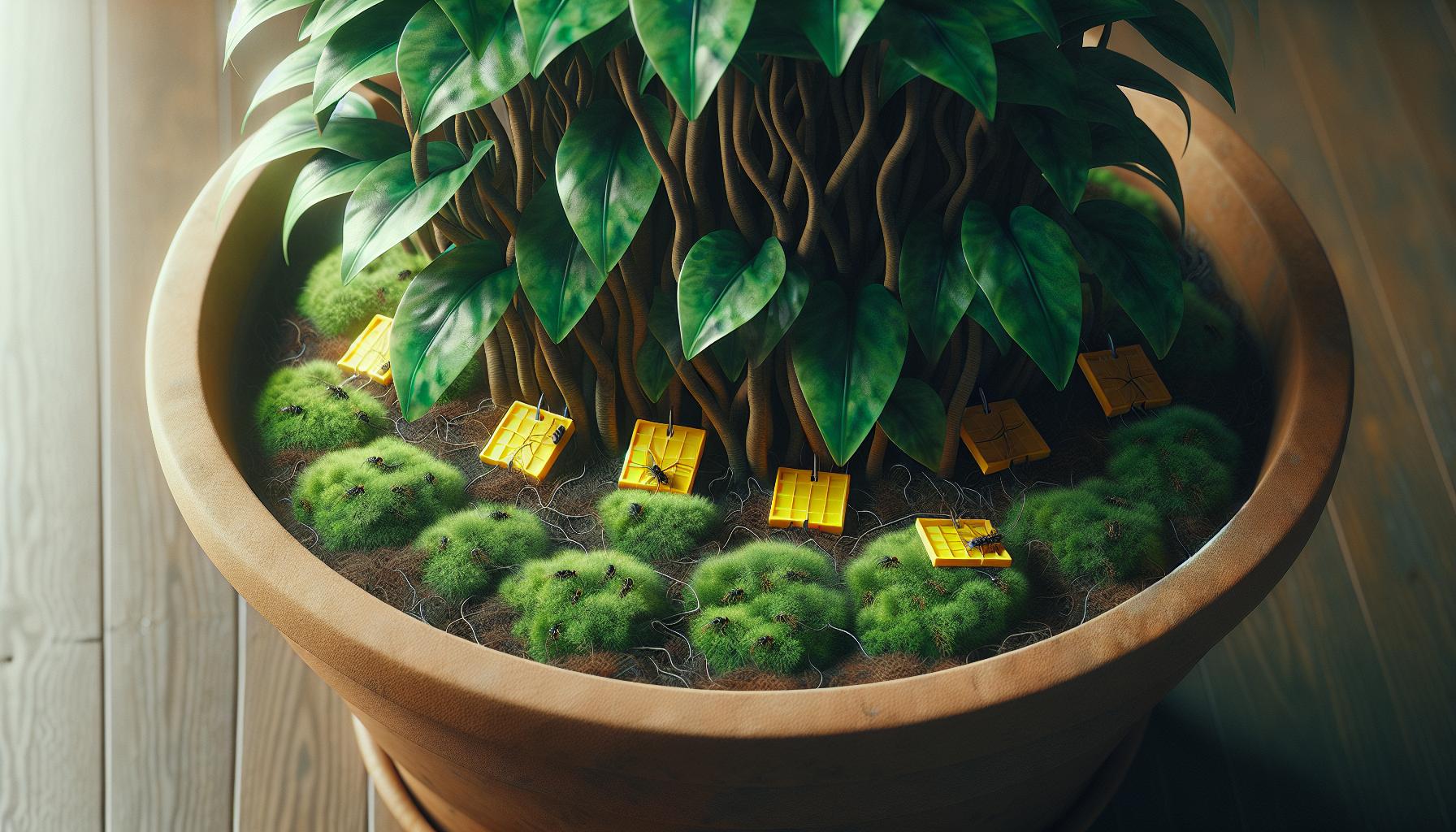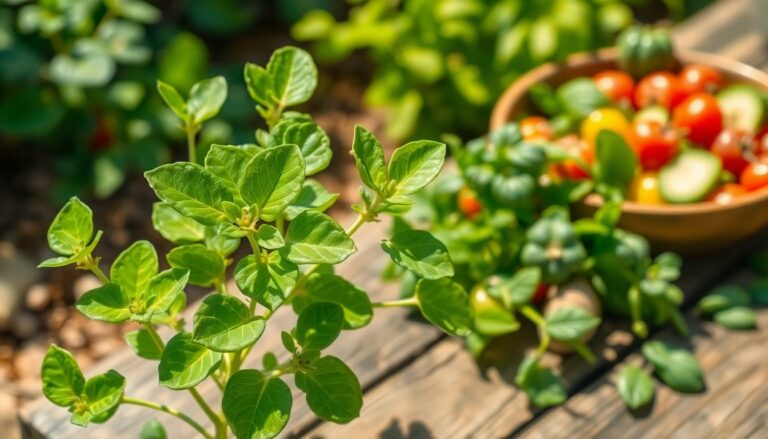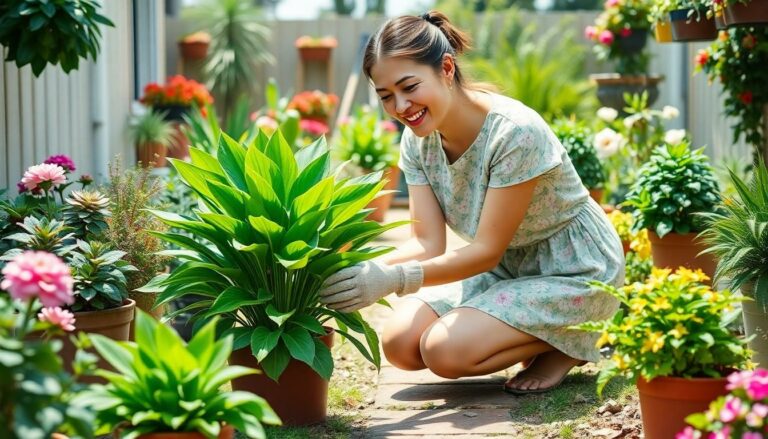I’ve been battling those pesky fungus gnats in my houseplants and I know firsthand how frustrating these tiny flying insects can be. These persistent pests seem to appear out of nowhere hovering around my beloved indoor garden making it difficult to enjoy my green sanctuary.
As an experienced plant parent I’ve learned that these small black flies aren’t just annoying – they can actually harm your plants. Their larvae feed on plant roots and organic matter in the soil which can lead to stunted growth and even plant death if left unchecked. After trying numerous methods to get rid of these unwanted guests I’ve discovered several effective solutions that have helped me reclaim my indoor garden.
Key Takeaways
- Fungus gnats are tiny flying insects that thrive in moist soil and can damage houseplants by feeding on roots and organic matter
- The main causes of fungus gnat infestations include overwatering, poor drainage, consistently damp soil, and high organic matter content in potting mix
- Natural control methods like yellow sticky traps, diatomaceous earth, and proper watering practices can effectively manage fungus gnat populations
- Preventive measures such as quarantining new plants, maintaining proper drainage, and allowing soil to dry between waterings are crucial for avoiding future infestations
- Complete fungus gnat control requires targeting both adult flies and larvae through a combination of soil management and trapping methods
What Are Fungus Gnats and Why They Love House Plants
Fungus gnats (Bradysia species) are small, mosquito-like flies that thrive in moist soil conditions. These 1/8-inch insects target indoor plants seeking organic matter decomposition in potting soil.
Identifying Fungus Gnats in Your Indoor Garden
Adult fungus gnats appear as tiny black flies with long legs wings. I distinguish them by these key characteristics:
- Weak flyers that hover around plant bases
- Dark-colored bodies measuring 2.5mm in length
- Y-shaped wing veins visible under magnification
- Active movement when soil is disturbed
- Concentrated presence near windows drains
Understanding Their Life Cycle
The fungus gnat life cycle consists of 4 distinct stages spanning 3-4 weeks:
| Stage | Duration | Description |
|---|---|---|
| Egg | 4-6 days | Laid in moist soil clusters of 30-200 |
| Larvae | 12-14 days | White translucent worms with black heads |
| Pupa | 5-6 days | Cocoon formation in soil surface |
| Adult | 7-10 days | Flying reproductive stage |
The larvae create the most damage by:
- Feeding on organic matter in soil
- Consuming young root tissue
- Creating entry points for root rot
- Spreading soil-borne pathogens
- Stunting plant growth through root damage
- Consistently moist soil
- Organic matter presence
- Temperatures between 68-77°F
- High humidity levels
- Overwatered plants
Common Causes of Fungus Gnat Infestations
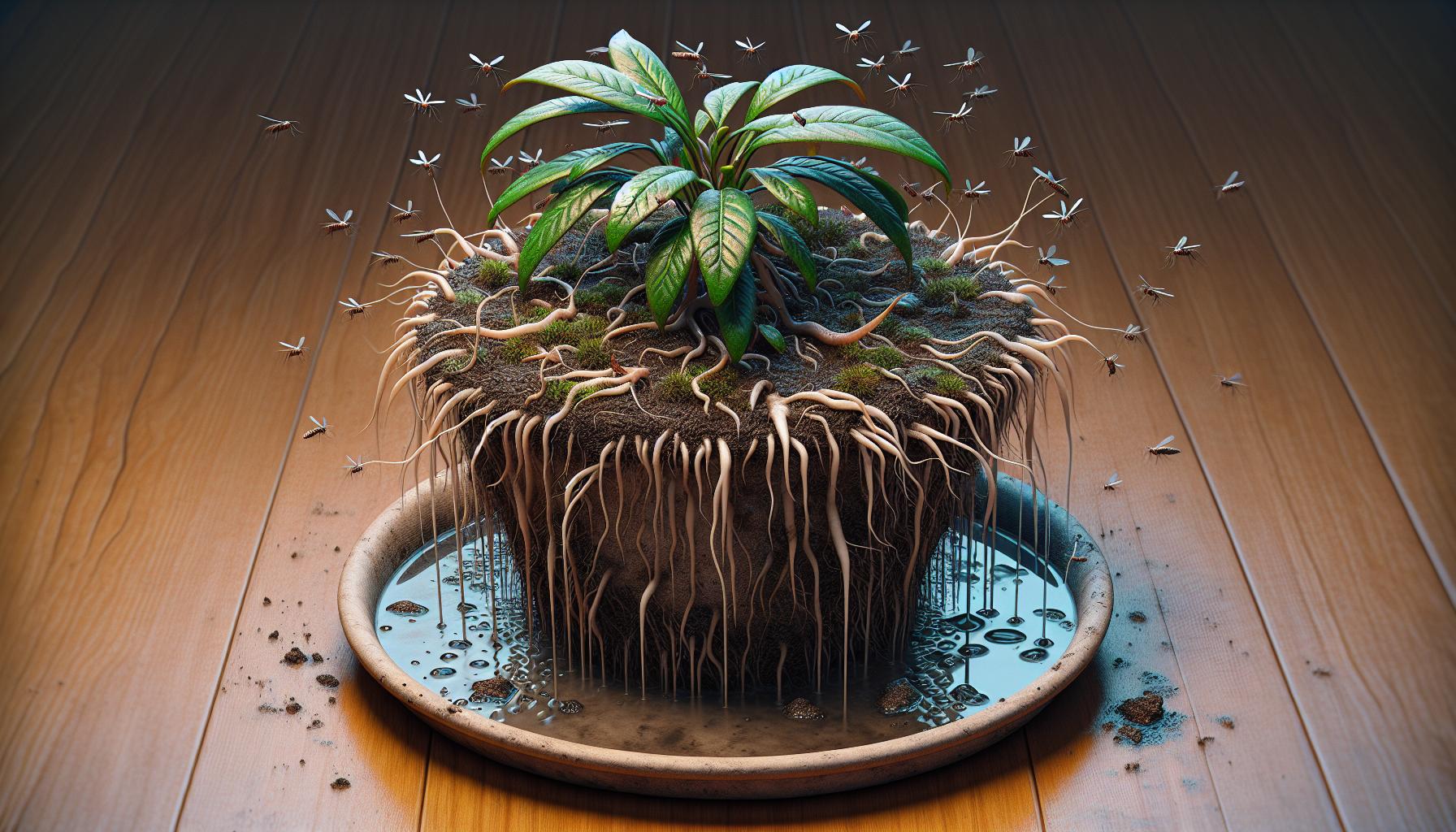
I’ve identified several key factors that create ideal conditions for fungus gnat populations to thrive in houseplants. These environmental conditions often work together to create perfect breeding grounds for these persistent pests.
Overwatering and Soil Moisture Issues
Overwatering creates consistently wet soil conditions that attract fungus gnats to lay eggs. I’ve observed that keeping soil constantly moist, especially in the top 2-3 inches, provides the perfect environment for larvae development. Adult fungus gnats lay 100-300 eggs in moist organic matter, with eggs hatching within 4-6 days when soil moisture levels exceed 60%.
Poor Drainage and Soil Quality
Compacted soil restricts proper water flow, leading to stagnant moisture that fungus gnats love. I’ve found that dense potting mixes with high percentages of organic matter (>30%) retain excess moisture longer than well-draining soils. Common drainage issues include:
- Blocked drainage holes in containers
- Heavy peat-based potting mixes without perlite or sand
- Decomposing organic material in older potting soil
- Missing drainage layers at pot bottoms
- Saucers filled with standing water
These conditions create a humid microenvironment at soil level, maintaining moisture levels that support fungus gnat reproduction cycles. When combined with overwatering, poor drainage transforms potted plants into active breeding sites for fungus gnat populations.
Natural Ways to Get Rid of Gnats
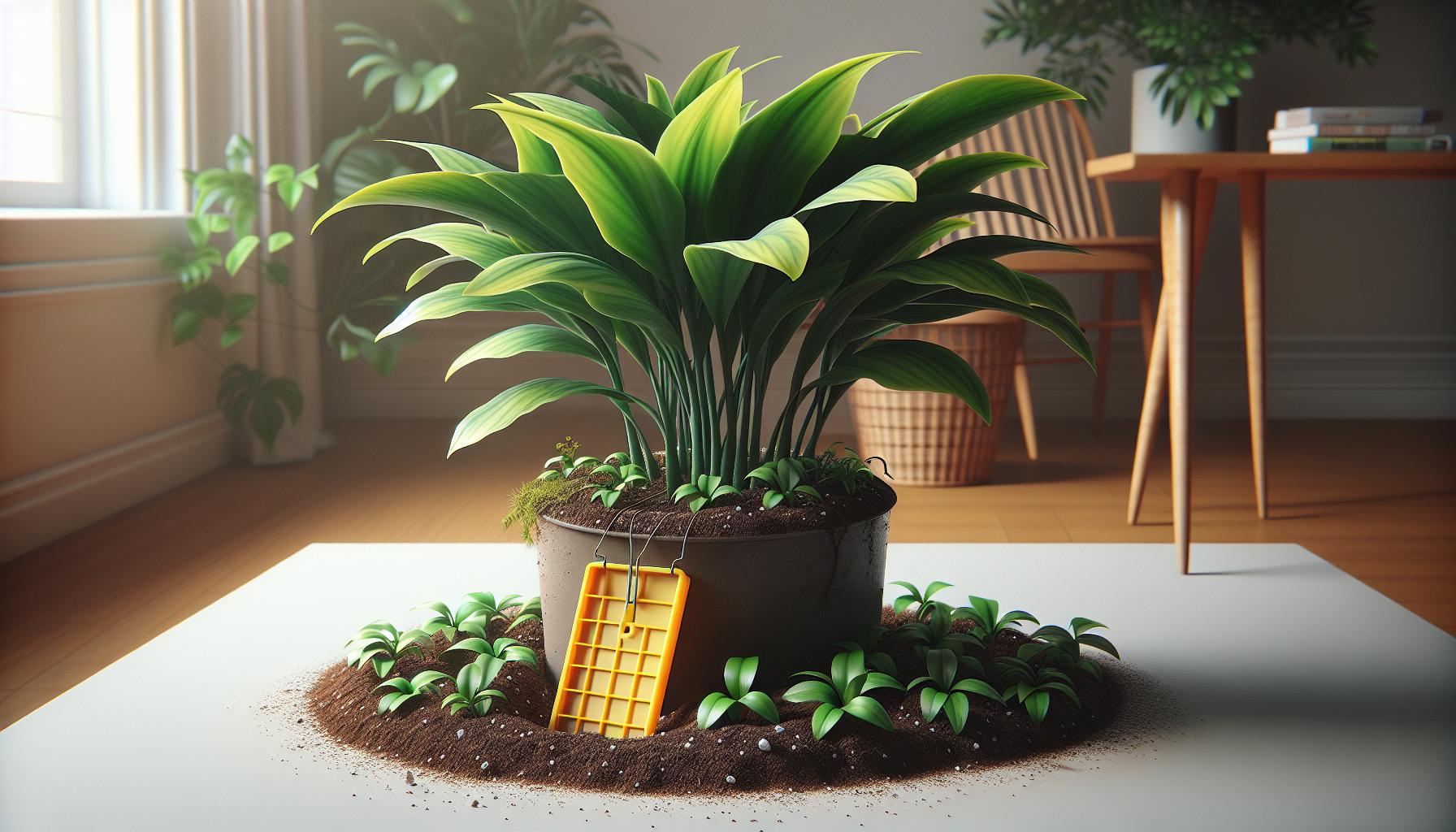
I’ve discovered several effective natural methods to eliminate fungus gnats from houseplants without using harmful chemicals. These eco-friendly solutions target both adult gnats and their larvae while maintaining plant health.
Sticky Trap Methods
Yellow sticky traps effectively capture adult fungus gnats during their flying stage. I place these adhesive cards horizontally at soil level where gnats typically hover, replacing them every 7 days when covered with insects. Here’s the optimal placement strategy:
- Position 1-2 traps per pot depending on plant size
- Cut larger traps into smaller segments for multiple containers
- Insert wooden skewers into trap corners for easy soil placement
- Monitor trap effectiveness by counting captured gnats daily
- Apply a 1/4 inch layer of diatomaceous earth on soil surface
- Top-dress soil with coarse sand to prevent egg laying
- Remove decomposed organic matter from topsoil weekly
- Allow top 1-2 inches of soil to dry between waterings
- Bottom water plants to maintain drier surface conditions
| Soil Amendment | Application Depth | Replacement Frequency |
|---|---|---|
| Diatomaceous Earth | 1/4 inch | Every 2-3 weeks |
| Coarse Sand | 1/2 inch | Monthly |
| Perlite Layer | 1 inch | Every 3 months |
Chemical Solutions and Treatments
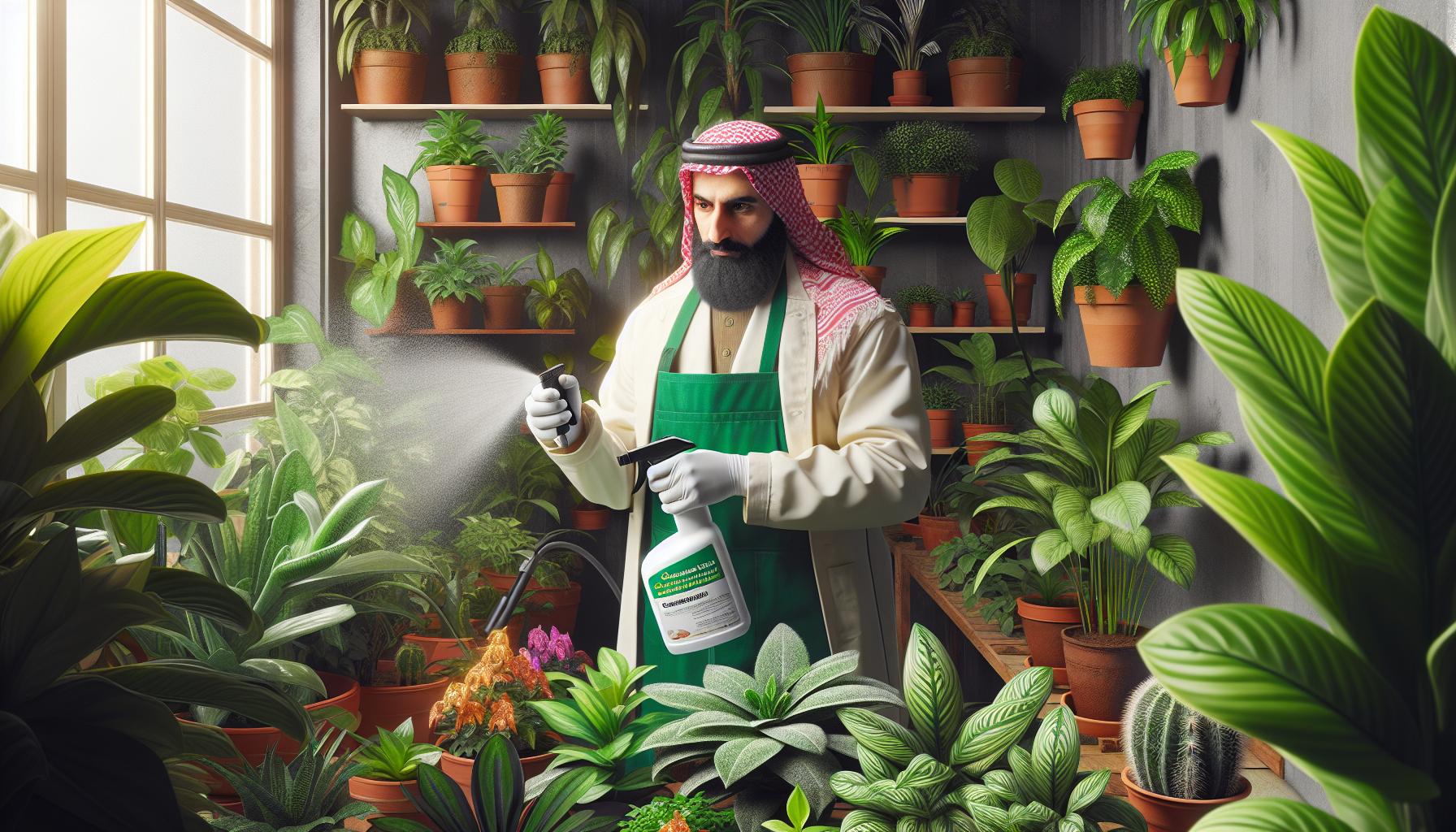
After exploring natural remedies, I’ve found chemical treatments offer targeted control for severe fungus gnat infestations in houseplants. These solutions provide quick results when applied correctly and safely.
Insecticidal Soaps
Insecticidal soaps kill fungus gnats on contact by disrupting their cell membranes. I mix 2-3 tablespoons of pure castile soap per gallon of water for an effective solution. Here’s how I apply insecticidal soaps:
- Spray the soil surface directly to target larvae
- Apply to plant foliage where adult gnats gather
- Treat plants every 4-5 days for 3 weeks
- Test on a small leaf area first to check for sensitivity
- Mix 1.5 teaspoons per gallon of water for indoor plants
- Apply directly to soil until thoroughly moistened
- Reapply every 60 days during active infestations
- Keep treated plants away from beneficial insects
| Treatment Type | Application Rate | Duration of Effect | Reapplication Interval |
|---|---|---|---|
| Insecticidal Soap | 2-3 tbsp/gallon | 2-3 days | 4-5 days |
| Systemic Pesticide | 1.5 tsp/gallon | 60 days | 60 days |
Prevention Tips for Future Infestations
After dealing with fungus gnat infestations, I’ve established essential preventive measures that protect my indoor plants. These strategies focus on maintaining optimal growing conditions while deterring gnat populations from establishing.
Proper Watering Practices
I water my plants only when the top 1-2 inches of soil feels dry to the touch. My proven watering schedule includes:
- Checking soil moisture with a moisture meter before each watering
- Using well-draining pots with multiple drainage holes at the bottom
- Emptying drainage saucers within 30 minutes after watering
- Reducing watering frequency during winter months by 50%
- Maintaining consistent room temperatures between 65-75°F (18-24°C)
- Placing new plants in a separate room away from existing plants
- Inspecting the soil surface daily for signs of adult gnats
- Setting yellow sticky traps around quarantined plants
- Repotting plants in sterile potting mix if needed
- Using clear plastic bags to create individual isolation chambers
- Testing soil pH levels to ensure proper growing conditions
| Quarantine Monitoring Schedule | Frequency |
|---|---|
| Visual Inspection | Daily |
| Sticky Trap Changes | Every 3-4 days |
| Soil Moisture Check | Every 2-3 days |
| Root Health Assessment | Weekly |
| pH Testing | Initial + Week 2 |
Conclusion
I’ve found that battling fungus gnats requires patience and a multi-faceted approach. While these pesky insects can be frustrating they’re not invincible. Through proper watering habits strong preventive measures and targeted treatments you can successfully eliminate these unwanted visitors from your indoor garden.
Remember that maintaining healthy plants is your best defense. I’ve learned that it’s easier to prevent an infestation than to fight one. By implementing the strategies I’ve shared you’ll create an environment where your plants can thrive and fungus gnats won’t want to call home.
Take action today to protect your beloved houseplants and enjoy a pest-free indoor garden!
